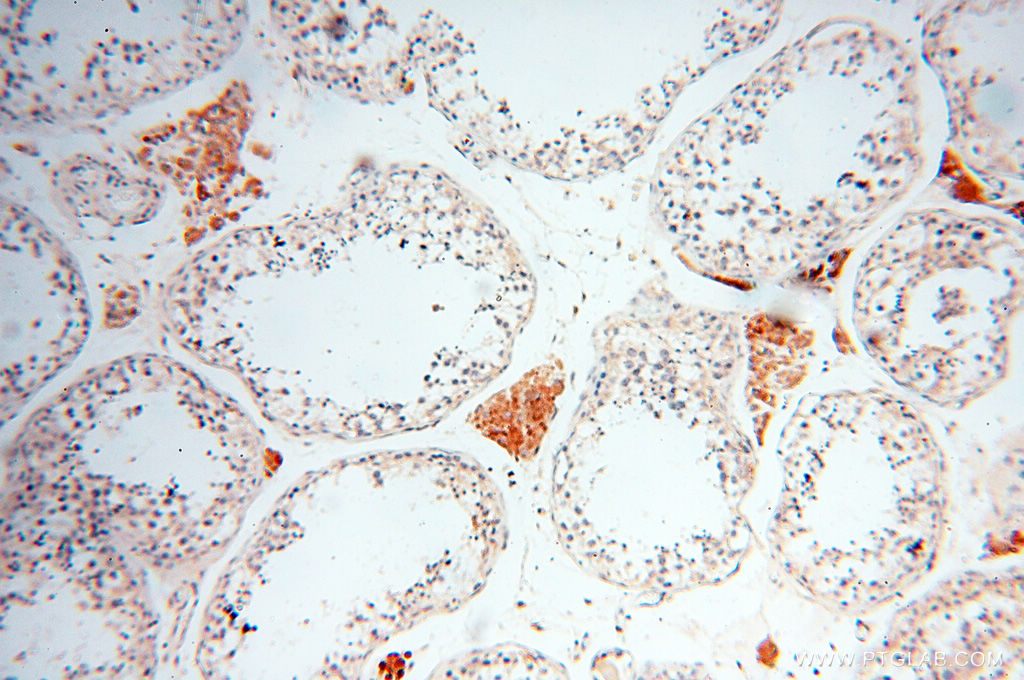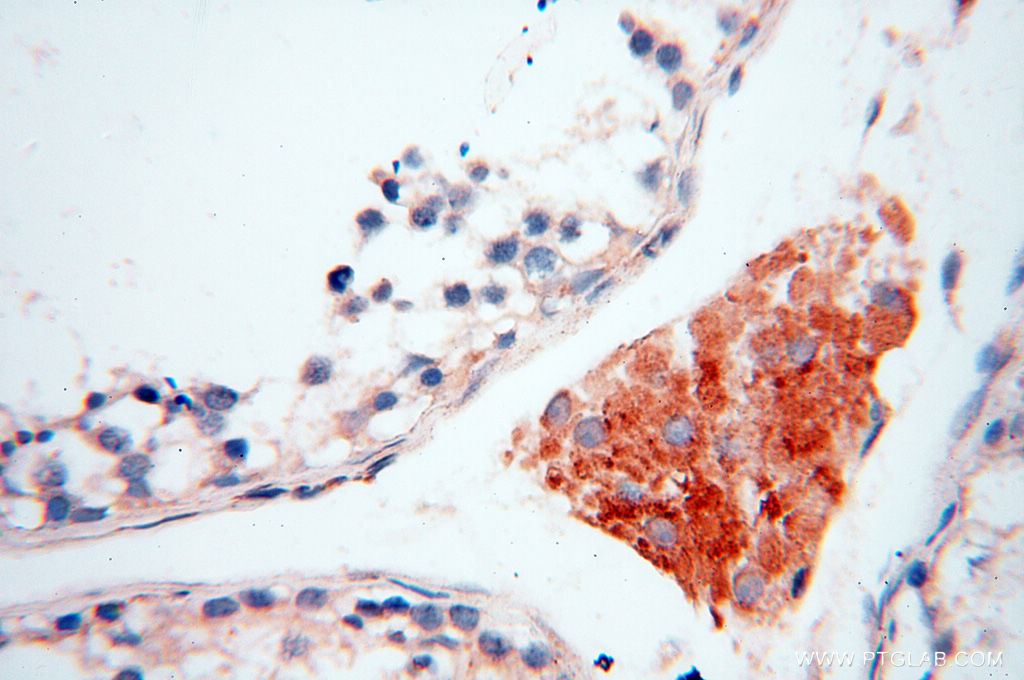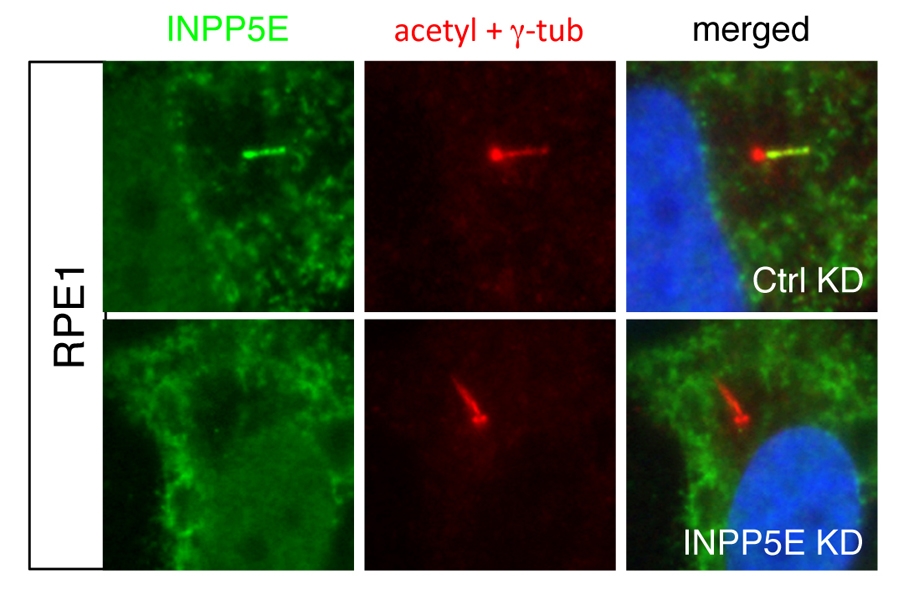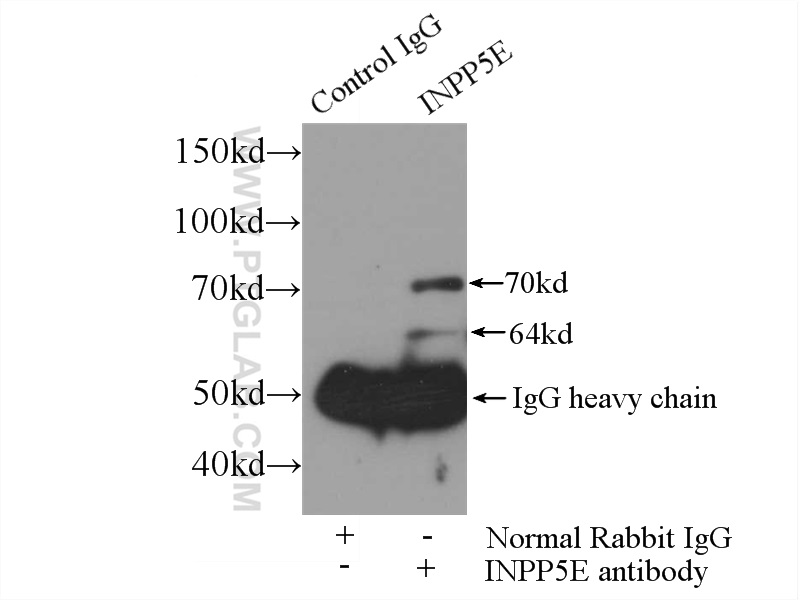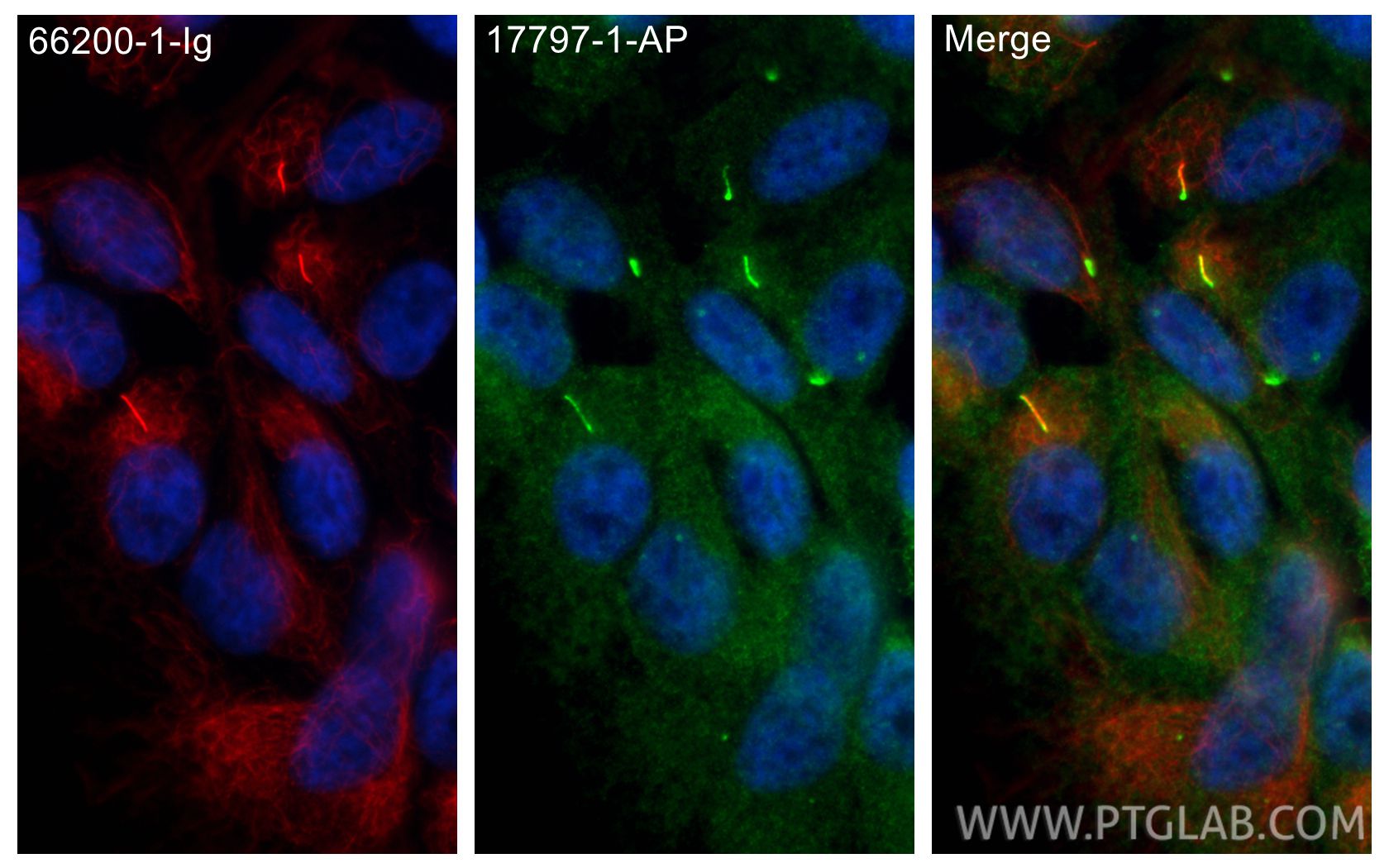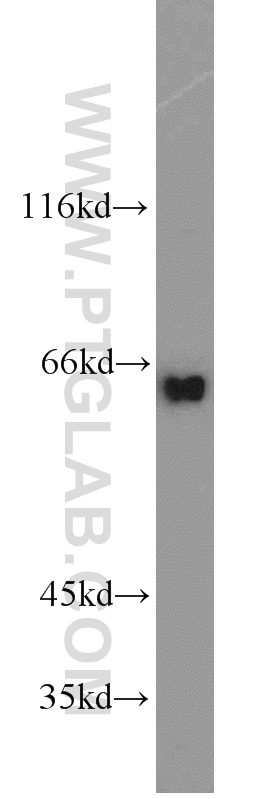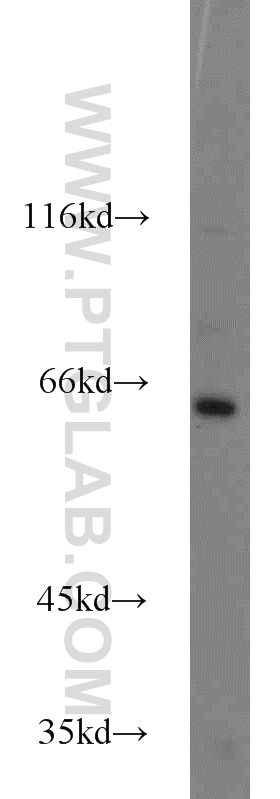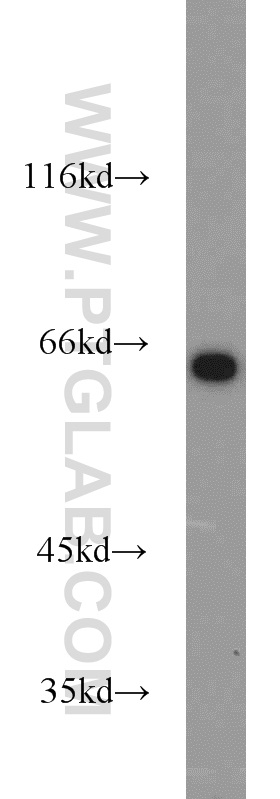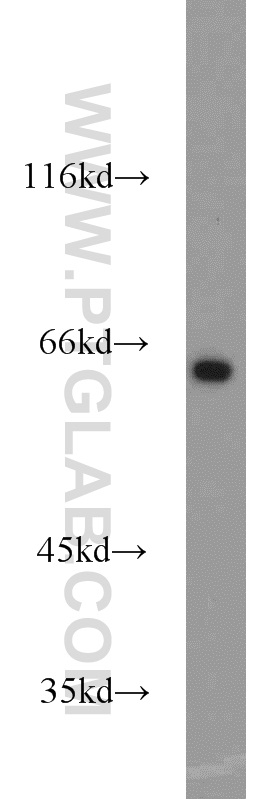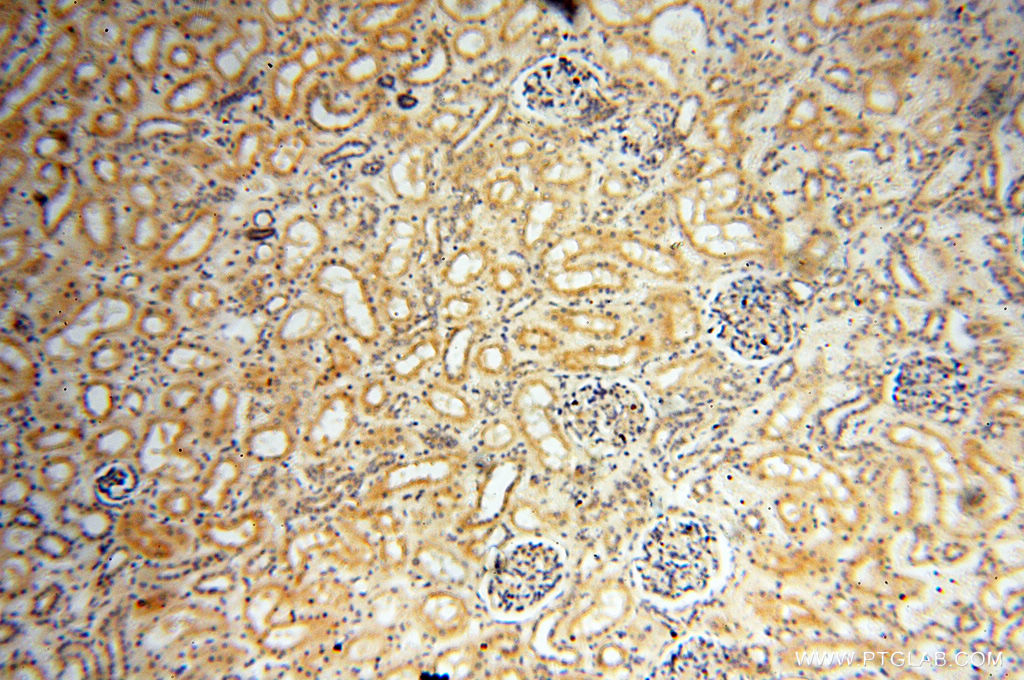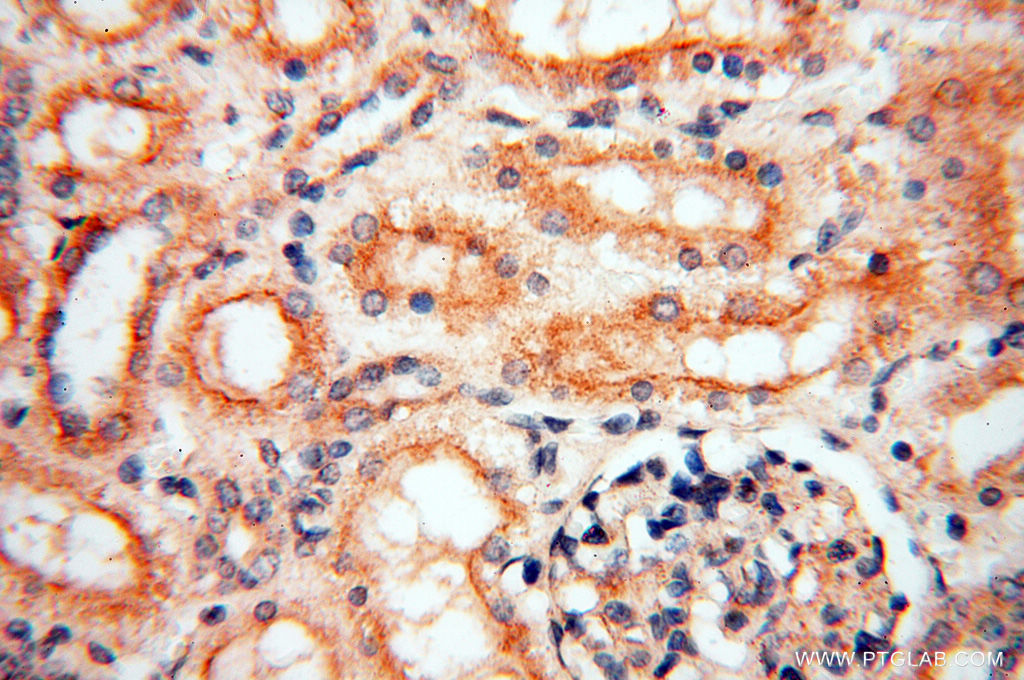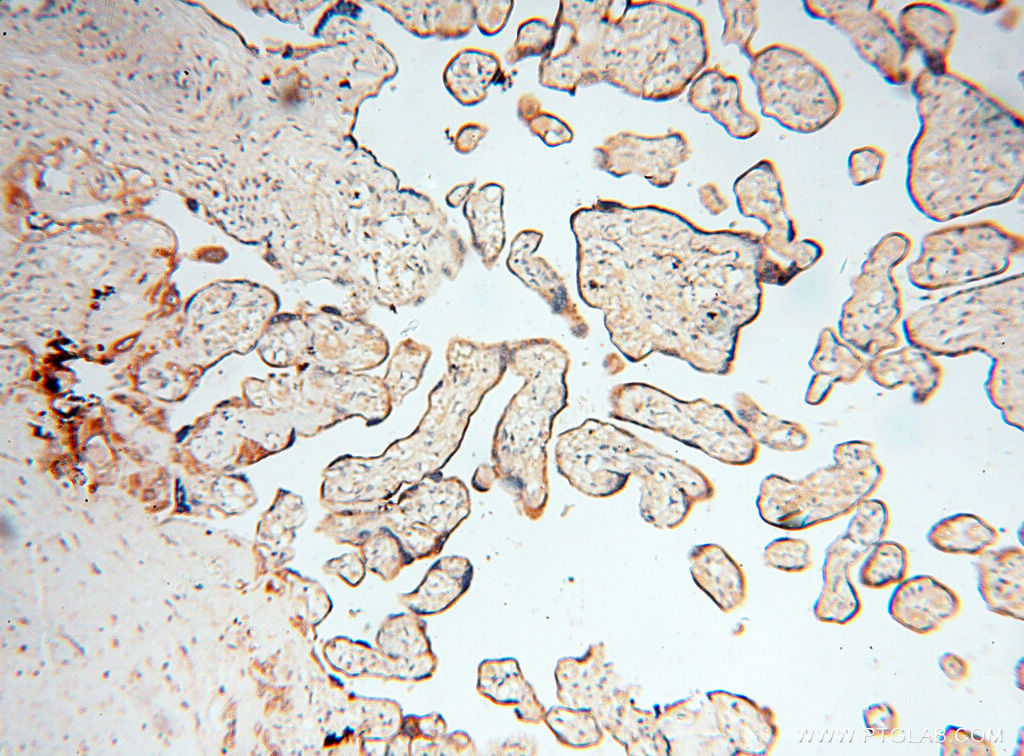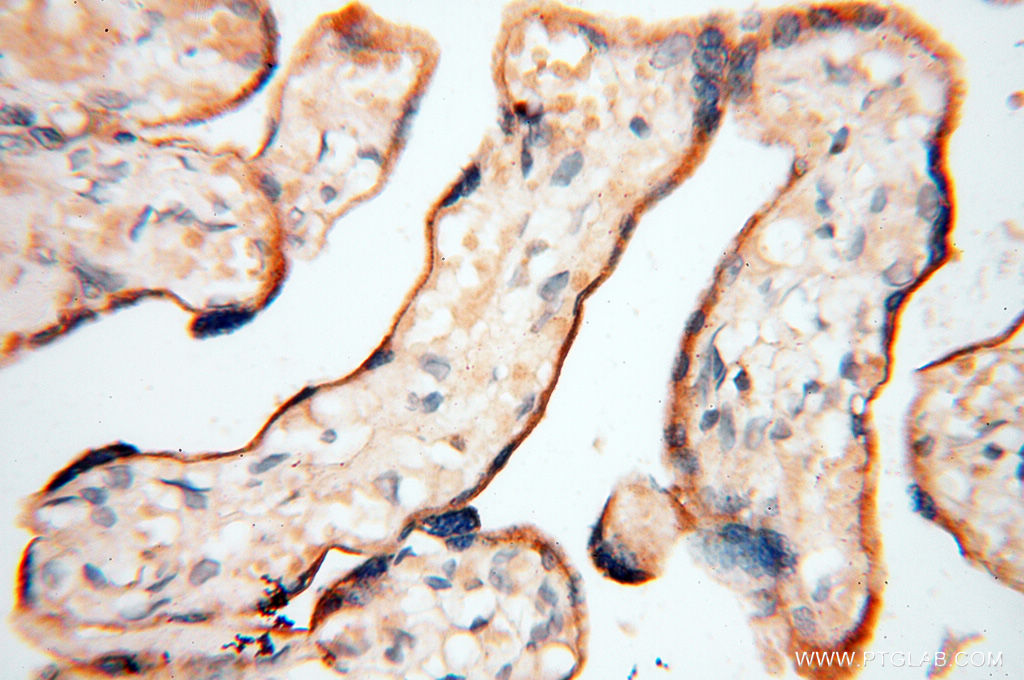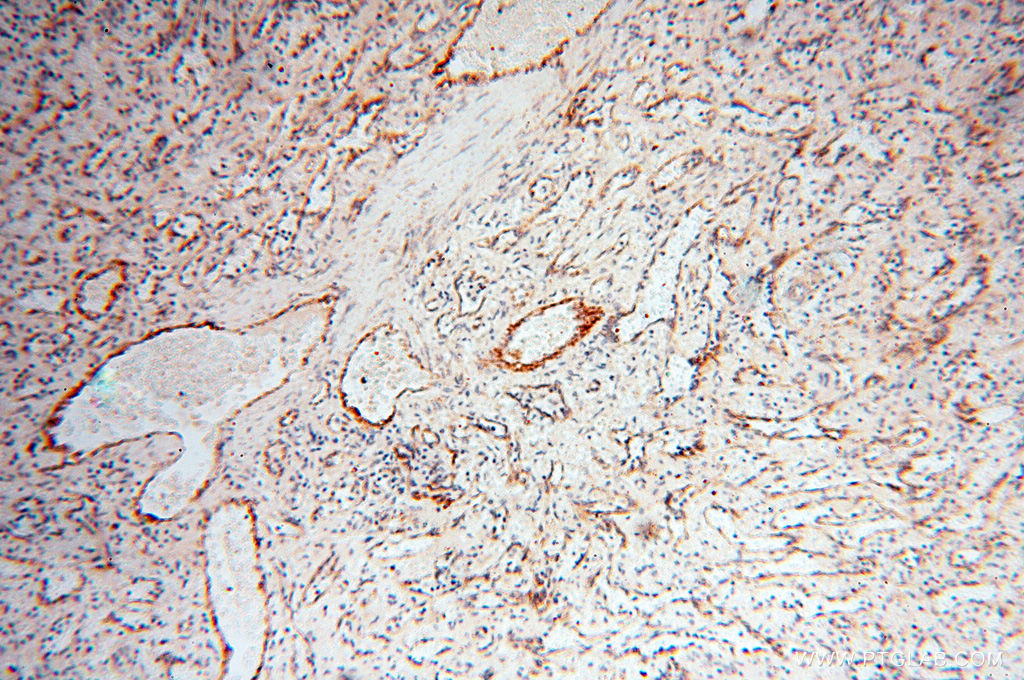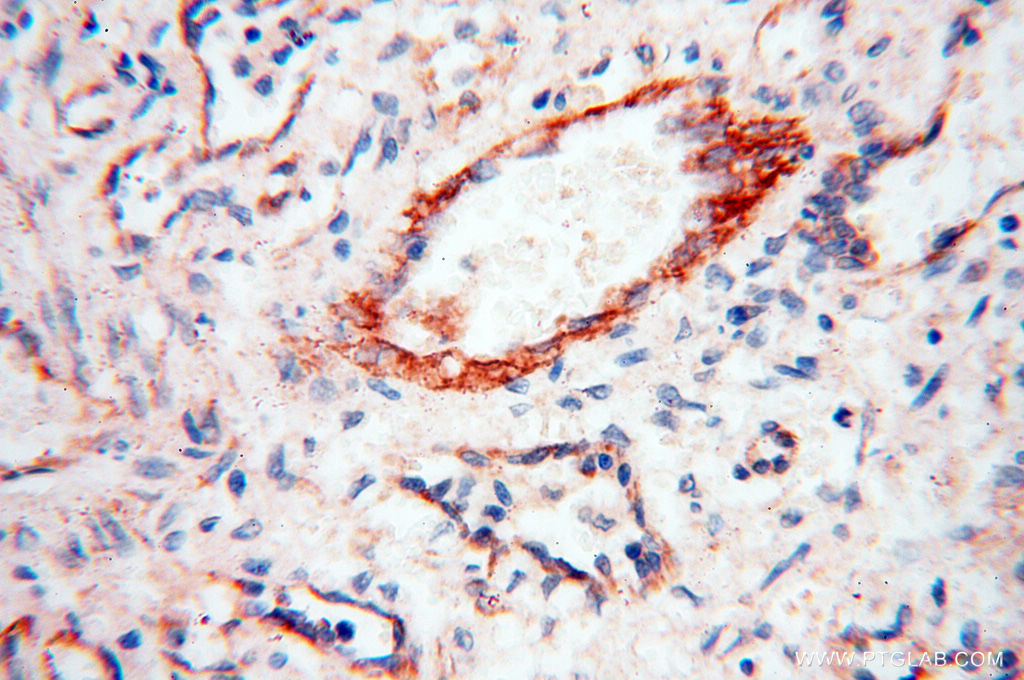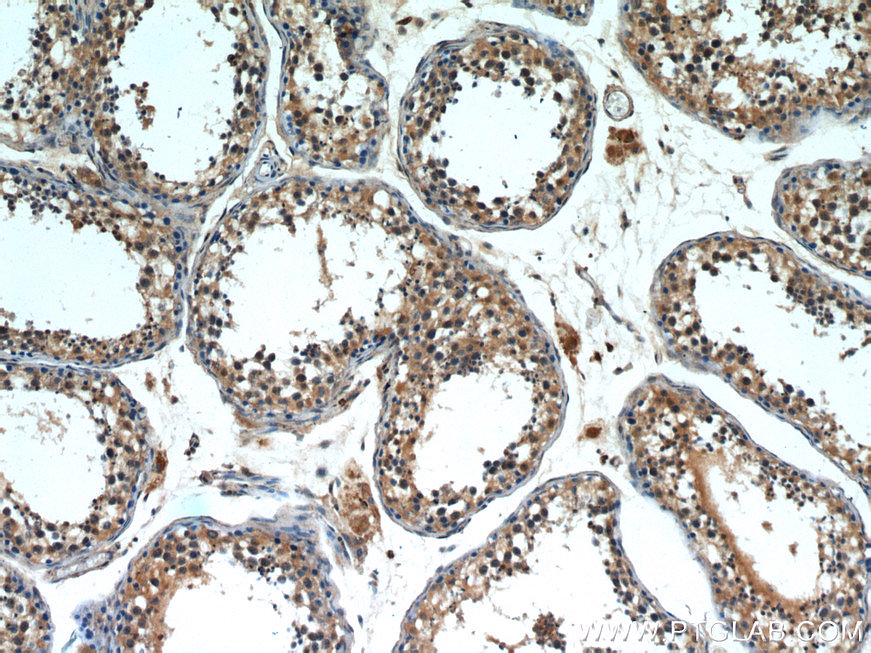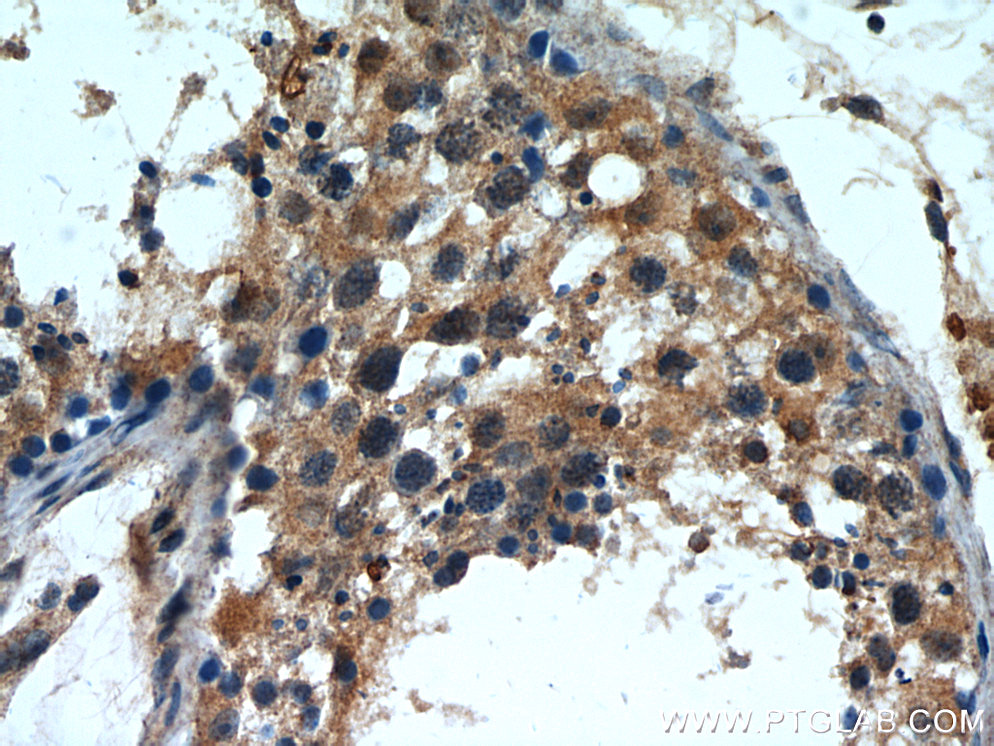验证数据展示
经过测试的应用
| Positive WB detected in | SH-SY5Y cells, HEK-293 cells, mouse brain tissue, mouse testis tissue |
| Positive IP detected in | HEK-293 cells |
| Positive IHC detected in | human testis tissue, human kidney tissue, human placenta tissue, human spleen tissue Note: suggested antigen retrieval with TE buffer pH 9.0; (*) Alternatively, antigen retrieval may be performed with citrate buffer pH 6.0 |
| Positive IF/ICC detected in | hTERT-RPE1 cells |
推荐稀释比
| 应用 | 推荐稀释比 |
|---|---|
| Western Blot (WB) | WB : 1:500-1:2000 |
| Immunoprecipitation (IP) | IP : 0.5-4.0 ug for 1.0-3.0 mg of total protein lysate |
| Immunohistochemistry (IHC) | IHC : 1:20-1:200 |
| Immunofluorescence (IF)/ICC | IF/ICC : 1:20-1:200 |
| It is recommended that this reagent should be titrated in each testing system to obtain optimal results. | |
| Sample-dependent, Check data in validation data gallery. | |
产品信息
17797-1-AP targets INPP5E in WB, IHC, IF/ICC, IP, CoIP, ELISA applications and shows reactivity with human, mouse, rat samples.
| 经测试应用 | WB, IHC, IF/ICC, IP, ELISA Application Description |
| 文献引用应用 | WB, IHC, IF, CoIP |
| 经测试反应性 | human, mouse, rat |
| 文献引用反应性 | human, mouse, zebrafish |
| 免疫原 |
CatNo: Ag11959 Product name: Recombinant human INPP5E protein Source: e coli.-derived, PET28a Tag: 6*His Domain: 1-350 aa of BC028032 Sequence: MPSKAENLRPSEPAPQPPEGRTLQGQLPGAPPAQRAGSPPDAPGSESPALACSTPATPSGEDPPARAAPIAPRPPARPRLERALSLDDKGWRRRRFRGSQEDLEARNGTSPSRGSVQSEGPGAPAHSCSPPCLSTSLQEIPKSRGVLSSERGSPSSGGNPLSGVASSSPNLPHRDAAVAGSSPRLPSLLPPRPPPALSLDIASDSLRTANKVDSDLADYKLRAQPLLVRAHSSLGPGRPRSPLACDDCSLRSAKSSFSLLAPIRSKDVRSRSYLEGSLLASGALLGADELARYFPDRNVALFVATWNMQGQKELPPSLDEFLLPAEADYAQDLYVIGVQEGCSDRREWET 种属同源性预测 |
| 宿主/亚型 | Rabbit / IgG |
| 抗体类别 | Polyclonal |
| 产品类型 | Antibody |
| 全称 | inositol polyphosphate-5-phosphatase, 72 kDa |
| 别名 | 72 kDa inositol polyphosphate 5-phosphatase, EC:3.1.3.36, EC:3.1.3.86, Inositol polyphosphate-5-phosphatase E, Phosphatidylinositol 4,5-bisphosphate 5-phosphatase |
| 计算分子量 | 644 aa, 70 kDa |
| 观测分子量 | 64-66 kDa |
| GenBank蛋白编号 | BC028032 |
| 基因名称 | INPP5E |
| Gene ID (NCBI) | 56623 |
| RRID | AB_2167120 |
| 偶联类型 | Unconjugated |
| 形式 | Liquid |
| 纯化方式 | Antigen affinity purification |
| UNIPROT ID | Q9NRR6 |
| 储存缓冲液 | PBS with 0.02% sodium azide and 50% glycerol, pH 7.3. |
| 储存条件 | Store at -20°C. Stable for one year after shipment. Aliquoting is unnecessary for -20oC storage. |
背景介绍
INPP5E(72 kDa inositol polyphosphate 5-phosphatase) converts phosphatidylinositol 3,4,5-trisphosphate (PtdIns 3,4,5-P3) to PtdIns-P2.In mouse, highest protein expression was in brain, heart, and testis, with lower expression in thymus and lung, and very little expression in kidney, spleen, and liver(PMID:10764818). Defects in INPP5E are the cause of Joubert syndrome type 1 (JBTS1) and mental retardation-truncal obesity-retinal dystrophy-micropenis (MORMS)(PMID:19668215). It has 2 isoforms with the molecular mass of 66 kDa and 70 kDa.
实验方案
| Product Specific Protocols | |
|---|---|
| IF protocol for INPP5E antibody 17797-1-AP | Download protocol |
| IHC protocol for INPP5E antibody 17797-1-AP | Download protocol |
| IP protocol for INPP5E antibody 17797-1-AP | Download protocol |
| WB protocol for INPP5E antibody 17797-1-AP | Download protocol |
| Standard Protocols | |
|---|---|
| Click here to view our Standard Protocols |
发表文章
| Species | Application | Title |
|---|---|---|
Sci Adv Ciliopathy protein HYLS1 coordinates the biogenesis and signaling of primary cilia by activating the ciliary lipid kinase PIPKIγ.
| ||
Nat Commun Phosphatidylinositol phosphate kinase PIPKIγ and phosphatase INPP5E coordinate initiation of ciliogenesis. | ||
Nat Commun KIF13B establishes a CAV1-enriched microdomain at the ciliary transition zone to promote Sonic hedgehog signalling. | ||
Proc Natl Acad Sci U S A ARL13B, PDE6D, and CEP164 form a functional network for INPP5E ciliary targeting.
| ||
JCI Insight Mutations in OSBPL2 cause hearing loss associated with primary cilia defects via Sonic Hedgehog signaling. |


